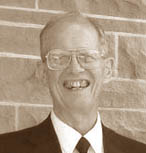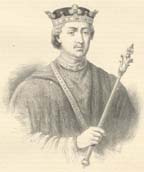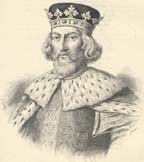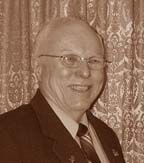 |
Sewell Vincent Sample 1928 - 2005 These pages would not have been possible without the help and encouragement of Sewell Vincent Sample who shared the results of his research. |
 |
Sewell Vincent Sample 1928 - 2005 These pages would not have been possible without the help and encouragement of Sewell Vincent Sample who shared the results of his research. |
Please visit the Sewell Genealogy Site Map for other pages in this series.
| Click for
PDF index |
The information presented here has been taken from the following sources:
Marc Morris: The Bigod Earls of Norfolk in the Thirteenth
Century, Woodbridge, Suffolk, 2005
Douglas Richardson: Plantagenet
Ancestry, Baltimore, 2004 (click to visit
the website)
Gary Boyd Roberts: Royal
Descents of 600 Immigrants, Genealogical
Publishing, Baltimore, 2004
Norman F. Cantor (ed.): The Encyclopædia
of the Middle Ages, New York, 1999
Frederick L. Weis and Walter L.
Sheppard: Ancestral Roots, 7th Edition, Baltimore,
1999
Frederick L. Weis and Walter L.
Sheppard: The Magna Charta Sureties, 1215, Baltimore,
1999
George Andrews Moriarty: The
Plantagenet Ancestry of King Edward III and Queen Philippa,

Generation
One
Henry II Curtmantle, King of
England
Born on March 5, 1132/33 at Le
Mans, Maine;
Crowned King of England on December
19, 1154 at Westminster Abbey.
Died on July 6, 1189 at Château
Chinon, Normandy
Henry was a son
of Geoffrey
"the Fair" Plantagenet and Matilda
of England, the only surviving legitimate child of King Henry
I of England. Matilda (or Maud) of England, (1103/04 - 1167) had married
first Henry V of Franconia, Emperor of the West (Also referred to as Emperor
of Almain and Emperor of Germany; he d.s.p. in 1125.) Because of her first
marriage, Matilda is sometimes referred to as "Matilda the Empress", but
more frequently as "Lady of the English" or "Heiress of England", or sometimes
"Queen of the English". Matilda married secondly in 1127 Geoffrey "the
Fair" Plantagenet, Count of Anjou and Maine.
| References Richardson: p.3 Weis, Ancestral: 1-25 Weis, Magna Charta, 161-10 Moriarty, pg. 13 |
Henry was known as "Curtmantle" or "Short Cloak" because of his preference for short hunting style jackets instead of long robes. His huge domain of England, Wales, most of Ireland and a large portion of France was termed the "Angevin Empire" and this made him the most powerful of mediæval English kings and European monarchs. He reformed the judicial system and asserted the king's rights over those of the church. This led to a quarrel with Thomas Becket, Archbishop of Canterbury, who was murdered in his cathedral by knights loyal to King Henry in 1170.
Henry Curtmantle married on May 18, 1152 at Bordeaux, France, to Eleanor of Aquitaine whose ex-husband was Louis VII "the Young" Capet, King of France. For Eleanor's ancestry including her descent from the Emperors of Byzantium, please click on Eleanor of Aquitaine.
Henry and Eleanor had the following children:
Ykenai or Hikenai, by whom
he had a son:
|
an unknown lady by whom he had a daughter:
|
| Ida de Tosny who
was very likely a daughter of Ralph V de Tosny (died 1162) and his wife
Margaret (born circa 1125 and living in 1185), a daughter of Robert de
Beaumont, 2nd Earl of Leicester. However, absolute and conclusive evidence
of Ida's parentage is lacking. Ida later became
the wife of
Magna
Charta Surety Roger Bigod, 2nd Earl of Norfolk. (See Douglas Richardson:
Plantagenet
Ancestry, Baltimore, 2004, pages 456 – 457 and Marc Morris: The
Bigod Earls of Norfolk in the Thirteenth Century, Woodbridge, Suffolk,
2005, page 2)
Henry and Ida had a son:
|
| Alice of France, a daughter of Louis VII of France and his second wife Constance. Henry was married to Eleanor of Aquitaine who was Louis VII's first wife; so this affair was with his wife's ex-husband's daughter by his second marriage who also happened to be a younger sister of Margaret of France who had married Henry's son, Henry "the Young King". (Henry's affairs are certainly confusing!) Henry and Alice had an unnamed daughter who died in infancy. |
Nest, a daughter of Iorwerth
ab Owain, Lord of Caerleon and his wife Angharad, who was a daughter of
Uchdrud, Bishop of Llandaff. Henry and Nest had a son:
|
| References Richardson: p.3-9 Morris: p.2 Roberts p.403 Weis, Ancestral: 1-25, 110-26, 27 |

Generation
Two
John Lackland, King of England
Born about December 27, 1166 at
Oxford.
Crowned King of England on May
27, 1199 at Westminster Abbey.
Died on October 19, 1216 at Newark.
This is the notorious King John who, under considerable pressure, granted the Magna Charta and then attempted to welsh on the deal. King John is perhaps best remembered as the arch enemy of the legendary outlaw Robin Hood. John was known as "Lackland" because he originally had only a few separate land holdings; but he ended up ruling the huge Angevin Empire when he became king following the death of his brother King Richard. John eventually lost many of his French possessions.
John took a close interest in the details of governmental and legal business; but he was endlessly suspicious of his own barons and he forced many confrontations, not the least of which resulted in the barons forcing King John to sign the Magna Charta.
John had a big argument with Pope Innocent III over the appointment of Stephen Langton as Archbishop of Canterbury. John refused to accept Langton and the pope eventually retaliated by excommunicating John in 1209. At this point, John is said to have sent an embassy to Spain consisting of a priest known as Robert of London and two knights, Thomas de Erdington and Ralph Fitz Nicholas. The three men conferred with the Islamic Emir Al Mounenim also known as Mohammed Al Nassir and they were alleged to have proposed some sort of a deal whereby John would switch to the Islamic faith if the powerful Emir would support him as King of England. Of course, John likely intended to welsh on the deal and the Emir declined the offer anyway.
John married first on August 29,
1189 to Isabel
of Gloucester, youngest daughter of his father's cousin William Fitz
Robert; i.e., John and Isabel were second cousins. John divorced Isabel
in 1199 and kept her a prisoner of state until 1214. They didn't have any
children.
John married second on August 24, 1200 to Isabel of Angoulême and they had the following children:
Clemence, by whom he had a daughter:
|
"daughter" de Warenne, a daughter of Hamelin
Plantagenet de Warenne, Earl of Surrey and Isabel
de Warenne, daughter of William de Warenne, 3rd Earl of Surrey. Hamelin
was a half brother of King Henry II Curtmantle, thus John and "daughter"
de Warenne were first cousins. Unfortunately, "daughter" de Warenne's first
name has been lost, but it is known that she and John had a son:
|
Hawise, by whom he had a son:
|
Assorted girl friends whose names have been lost
by whom he had the following children:
|
Additional girl friends by whom he may have had
the following children:
|
| References Richardson: p.9-13 Roberts p.403 Weis, Ancestral: 1-23, 26-27, 27-27, 259-30 |
Generation Three
Richard Fitz Roy, also Richard
de Warenne and Richard de Chilham.
Died in June, 1246
Richard was also known as "Richard de Warenne" because his mother was a daughter of Hamelin Plantagenet de Warenne and Isabel de Warenne; his uncle was William de Warren, 6th Earl of Warren & Surrey (died May 27, 1240) who is named in the Magna Charta as an advisor of King John. Richard is sometimes known as "Richard de Chilham" because he had, among other titles, that of "Baron of Chilham."
Richard married before May 11, 1214 to Rose de Dover (or Douvres), daughter and heiress of Fulbert de Dover and Isabel, a daughter of William Briwere. Rose and Richard had the following children:
| References Richardson: p.48-49 Roberts p.403 Weis, Ancestral: 218-27 |
Generation Four
Lora de Dover, also Lorette
de Dover, Lorette de Chilham.
Lora married before June 7, 1248 to Sir William Marmion, Knight, son and heir of Robert Marmion of Tanfield. Sir William accompanied King Hnery III to France in 1259, but took the side of the Barons against King Henry III for which he was pardoned on July 1, 1267. Sir William died in 1275 or 1276.
Lora and William had the following son:
| References Richardson: p.493 Roberts p.403 Weis, Ancestral: 218-28 |
Generation Five
Sir John Marmion, 1st Lord Marmion
Born in or before 1255 (of age in 1276)
Died before May 7, 1322
John was summoned to Parliament from September 23, 1313 to May 2, 1322, by writs directed Johanni Marmyon or de Marmioun, whereby he is held to have become Lord Marmion.
John married Isabel, widow of Ralph de Plaix of Ilford, Sussex and they had a son:
| References Richardson: p.493 Roberts p.403 Weis, Ancestral: 218-29 |
Generation Six
Sir John Marmion, 2nd Lord Marmion
Born circa 1292 (was 30 in 1322)
Died on April 30, 1335
John was among the adherants of Thomas, Earl of Lancaster who were responsible for the beheading (without a trial) of King Edward II's friend Peter (Piers) Gaveston in 1312 for which he was pardoned in October 1313. He was summoned to Parliament on December 3, 1326 and in May 1329 he had a protection for three years, going on a pilgrimage to the Holy Land.
John married Maud de Furnival, a daughter of Thomas de Furnival, Lord Furnival and his first wife Joan, daughter of Hugh le Despenser. John and Maud had the following children:
| References Richardson: p.493-494 Roberts p.403 Weis, Ancestral: 148A-32, 218-30, 31 Weis, Magna Charta: 132-7 |
Generation Seven
Avice Marmion
Avice was co-heiress about 1360 to her brother Robert Marmion, 3rd Lord Marmion, by which she inherited the manors of East and West Tanfield, Yorkshire; Quinton, Gloucestershire; Berwick, Sussex; Wintringham, Lincolnshire, etc.
Avice married before 1343 to John Grey, Knight of the Garter, 1st Lord Grey of Rotherfield who was a Founder Knight of the Order of the Garter in 1348. John had a previous marriage to Katherine Fitz Alan who died before August 7, 1328. John Grey had an argument with William la Zouche Mortimer, 1st Lord Zouche in January 1331/32 and he drew his knife in the presence of the King. He was committed to prison and was pardoned on March 27, 1332. John was summoned to Parliament from November 15, 1338 to December 15, 1357 and died on September 1, 1359.
Click on John Grey for his descent from Robert Fitz Walter, Leader of the Magna Charta Barons.
Avice and John had the following children:
| References Richardson: p554-555. Roberts p.403 Weis, Ancestral: 219-31 Weis, Magna Charta: 50-5 |
Generation Eight
Maud Grey
Died on January 29, 1394
Maud married firstly in 1358 to John Botetourt, son and heir apparent to John Botetourt, 2nd Lord Boutetourt of Weoley (in Northfield), Worcestershire. They had one son and two daughters. John Botetourt died in 1369.
Maud married secondly before June 13, 1374 to Sir Thomas Harcourt of Stanton Harcourt, Oxfordshire; Knight of the Shire for Oxfordshire; second son of William de Harcourt and Joan, daughter of Richard de Grey, 2nd Lord Grey of Codnor. Thomas succeeded to most of the Harcourt estates on the death circa 1349 – 50 of his older brother Richard. Thomas died on April 12, 1417.
Maud and Thomas had the following children:
| References Richardson: p.376 Roberts p.403 Weis, Ancestral: 50-35 Weis, Magna Charta: 50-6 |
Generation Nine
Sir Thomas Harcourt
Born about 1377; he was 40 at the time of his father's
death.
Died on July 6, 1420.
Sir Thomas Harcourt of Stanton Harcourt, Oxfordshire; Market Bosworth, Leicestershire; and Ellenhall, Staffordshire was Knight of the Shire of Oxfordshire. He was the second but eldest surviving son and heir.
Thomas married about November 8, 1406 to Jane Fraunceys, daughter of Sir Robert Fraunceys of Foremark, Derbyshire, Knight of the Shire for cos. Derby and Stafford, Sherriff of cos. Nottingham and Derby and his wife Isabel.
Thomas and Jane had the following children:
| References Richardson: p.376-377 Roberts p.403 Weis, Ancestral: 50-36 Weis, Magna Charta: 50-7, 8 |
Generation Ten
Sir Robert Harcourt, Knight of the Garter
Born on September 20, 1410
Died on November 14, 1470; slain by adherants of the
Staffords of the Lancastrian party.
Sir Robert Harcourt of Stanton Harcourt, etc. was Steward of Oxford University, Sheriff of Leicestershire and Warwickshire, and of Berkshire and Oxfordshire, Knight of the Shire for Oxfordshire and Berkshire and Constable of Vernon in Normandy.
Robert's feud with the Staffords began in 1448 by the killing of Richard Stafford at Coventry. He was pardoned for this in 1450. In 1457 he was in favour with the Lancastrian Government but was denounced as a Yorkist by 1459. In 1464 he was granted an annuity of £300 for life by the king for his services at the siege of Alnwick. He went to France in 1467 on embassy to King Louis XI at Rouen. In 1468 he was granted a pension of £20 for life for resisting traitors in Oxfordshire.
Robert married in or before 1440 to Margaret Byron, widow of Sir William Atherton and daughter of Sir John Byron of Clayton, Lancashire. Robert and Margaret had the following children:
| References Richardson: p.377 Roberts p.403 |
Generation Eleven
John Harcourt
Born about 1450; he was aged 20 in 1470.
Died on June 26, 1485
John Harcourt, Esquire, of Stanton Harcourt, Oxfordshire, etc. was the eldest son and heir. In 1475 he went into France as a soldier with King Edward IV. In 1483 he was outlawed for his part in the rebellion of Henry, Duke of Buckingham.
John married in or before 1466 to Anne Norreys, daughter of John Norreys (or Norris), Knight of the Shire for Berkshire and Oxfordshire. John and Anne had the following children:
| References Richardson: p.377-378 Roberts p.403 |
Generation Twelve
Lettice Harcourt
Born circa 1470
Lettice was co-heiress in 1503 – 9 to her brother, Sir Thomas Harcourt. Lettice married Humphrey Peshale of Tean and Blithewood in Checkley, Staffordshire, etc., Justice of the Peace for Staffordshire and Commissioner of the Array for Staffordshire.
Lettice and Humphrey had the following children:
| References Richardson: p.152 Roberts p.403 |
Generation Thirteen
Eleanor Peshale
Born circa 1485 – 1490
Eleanor was co-heiress in 1515 – 8 to her brother Richard Peshale. Eleanor married Humphrey Wolryche (or Wolriche) of Dudmaston (in Quatt) and Presthope (in Much Wenlock), Shropshire; son and heir of Thomas Wolryche of Dudmaston and Presthope and his wife Elizabeth, daughter and co-heiress of William Rowley. Humphrey Wolryche died in 1533.
Eleanor and Humphrey had the following
children:
|
|
| References Richardson: p.152 Roberts p.403 |
Generation Fourteen
Elizabeth Wolryche
Born circa 1505
Elizabeth married Edward Hopton, Esquire, of Rockhill (in Greet), Shropshire, gentleman usher of the chamber to King Henry VIII, steward of Richard's Castle, Herefordshire, and Staounton Lacy, Shropshire, son and heir of Henry Hopton.
Elizabeth and Edward had the following children:
|
|
| References Richardson: p.152-153 Roberts p.403 |
Generation Fifteen
Katherine Hopton
Born circa 1525
Katherine Hopton married first circa
1554 to Thomas Anderson, of London, grocer, son and heir of Thomas Anderson.
Katherine and Thomas had the following children:
|
|
|
|
| References Richardson: p.153 Roberts p.403 |
Generation Sixteen
Elizabeth Anderson
Died on December 12, 1636
Elizabeth Anderson married by licence dated January 7, 1571/72 to Sir William Garraway, citizen and mercer of London, son of John Garraway of London, citizen and mercer of London, and his wife Ursula, daughter of Sir John Bridges; i.e., Elizabeth married her stepfather's brother. Sir William Garraway was born about 1537 (aged 88 at death) and he died on September 26, 1625.
Elizabeth and William had the following children:
|
|
| References Richardson: p.707-708 Roberts p.403 |
Generation Seventeen
Elizabeth Garraway
Baptised on November 18, 1582
Died in June 1650
Elizabeth married Thomas Foxall, of St. Andrew Holborn, Middlesex and Lee, Kent, Citizen and Glover of London, son of Thomas Foxall, of Clarehome, Shropshire and his wife Hoan Bulledine. Thomas Foxall was granted the administration of the estate of William Warren of Barkway, Hertfordshire in 1623. He died in May 1647. Elizabeth died in June 1650 and left a will dated June 20, 1650 proved on June 25, 1650. Her grandson James Taylor who was three years old at the time (see Generation Nineteen below) was a legatee (recipient of legacy) in the will. Thomas and Elizabeth were buried in the churchyard at Lee, Kent; Thomas on May 21, 1647 and Elizabeth by his side on June 26, 1650.
Elizabeth and Thomas had the following children:
|
|
| References Richardson: p.708 Roberts p.403 |
Generation Eighteen
Mary Foxall
Baptised on February 15, 1617/18 at Lee, Kent.
Died in March 1685/86 and buried on March 5, 1685/86
at Lee, Kent.
Mary Foxall married at Lee, Kent on August 24, 1641 to Christopher Taylor of All Hallows, Honey Lane, London, Citzen and Leatherseller of London. Christopher died in January 1681/82 and was buried at St. Mary le Bow, London, on January 19, 1681/82. He left a will dated July 8, 1676; proved January 24, 1681/82.
Mary and Christopher had the following children:
|
|
| References Richardson: p.708 Roberts p.403 |
Generation Nineteen
James Taylor
Baptised on April 21, 1647 at Lee, Kent.
Died on July 30, 1716 at Lynn, Massachusetts and buried
at Boston, Massachusetts.
James was a legatee (recipient of legacy) in the 1650 will of his grandmother Elizabeth (Garraway) Foxall and in the 1676 will of his father Christopher Taylor. He immigrated to New England where he resided at Boston and Lynn, Massachusetts. In 1688 he purchased the Iron Works at Lynn from Samuel Appleton. He served as treasurer of Massachusetts Bay Colony from 1693 to 1714. James left a will dated July 24, 1716, proved August 21, 1716.
James married first before 1674 to Elizabeth (Fuller ?) who died before 1679 and they had the following children:
|
|
| References Richardson: p.708 Roberts p.403 Sewall: Diary, July 30 & Aug. 2, 1716 |
Generation Twenty
Mary Taylor
Born on December 28, 1671
Died on January 6, 1700
Mary married in 1694 to William Payne, born on January 22, 1688 and died on June 10, 1735; son of Tobias Payne and Sarah Winslow who was a daughter of John Winslow and Mary Chilton. John Winslow arrived on November 9, 1621 on the "Fortune" and was a younger brother of Governor Edward Winslow of Plymouth, Massachusetts. Mary Chilton arrived on the "Mayflower". She is said to have been "the first lady to step ashore" from the Mayflower in 1620; she was thirteen years old. Please click on Mayflower for further details.
Mary Taylor and William Payne had the following children:
| References Richardson: p.708 Payne: Letter Sewall: Appendix, p.1081 |
Generation Twenty-one
Mary Payne
Born on January 6, 1700
Died in 1731
Mary married on October 8, 1724 to
Jonathan Sewall (I) who was born on February 7, 1692/93 and died on November
21, 1731. Their son Jonathan Sewall (II) was the
last Attorney General of Massachusetts before the American Revolution.
| References Payne: Letter Sewall: Appendix, p. 1081 C.R.M. Sewell: Manuscript Book Berkin: p.3 |
Please click on Jonathan Sewall for the continuation of this line.
 This page was set up by Robert Sewell in November, 2005 to show the descent
of King Henry II and King John through to Jonathan Sewell, the last attorney
general of Massachusetts before the American Revolution. Robert Sewell
graduated from McMaster University (Hamilton, Ontario, Canada) in 1967
with a B.Sc. degree in chemistry. After a year of studies at the
University of Toronto's College of Education, he taught high school science
in Collingwood, Ontario for a year and then taught chemistry, physics and
general science in Hamilton, Ontario for twenty-nine years. Robert
Sewell retired from teaching in June 1998.
This page was set up by Robert Sewell in November, 2005 to show the descent
of King Henry II and King John through to Jonathan Sewell, the last attorney
general of Massachusetts before the American Revolution. Robert Sewell
graduated from McMaster University (Hamilton, Ontario, Canada) in 1967
with a B.Sc. degree in chemistry. After a year of studies at the
University of Toronto's College of Education, he taught high school science
in Collingwood, Ontario for a year and then taught chemistry, physics and
general science in Hamilton, Ontario for twenty-nine years. Robert
Sewell retired from teaching in June 1998.
Please visit the Sewell Genealogy Site Map